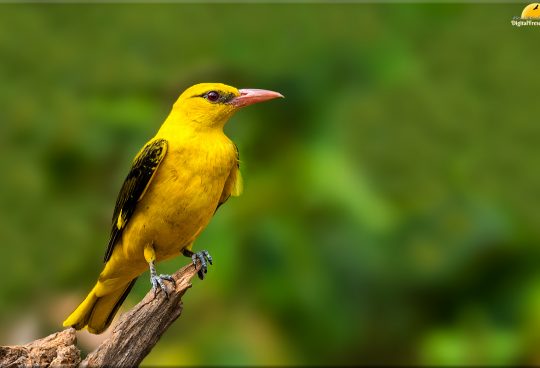The white-rumped shama (Copsychus malabaricus) is a small passerine bird of the family Muscicapidae. Native to densely vegetated habitats in the Indian subcontinent and Southeast Asia. It was formerly classified as a member of the thrush family, Turdidae, causing it to be commonly known as the white-rumped shama thrush or simply shama thrush. They typically weigh between 28 and 34 g (1.0 and 1.2 oz) and are around 23–28 cm (9–11 in) in length. Males are glossy black with a chestnut belly and white feathers on the rump and outer tail. Females are more greyish-brown, and are typically shorter than males. Both sexes have a black bill and pink feet. Juveniles have a greyish-brown colouration, similar to that of the females, with a blotchy or spotted chest.
They feed on insects in the wild but in captivity they may be fed on a diet of boiled, dried legumes with egg yolk and raw meat. It mainly feeds mainly on arthropods, including ants, caterpillars, moths, beetles, flies, grasshoppers, centipedes, spiders, also worms and berries. The voice of this species is rich and melodious which makes them popular as cage birds in South Asia with the tradition continuing in parts of Southeast Asia. It is loud and clear, with a variety of phrases, and often mimics other birds. They also make a ‘Tck’ call in alarm or when foraging. One of the first recordings of a bird song that was ever made was of this species. In Asia, their habitat is dense undergrowth especially in bamboo forests. In Hawaii, they are common in valley forests or on the ridges of the southern Koolaus, and tend to nest in undergrowth or low trees of lowland broadleaf forests. Not globally threatened and is classified as Least Concern by IUCN. Despite overall favourable conservation status, races tricolor considered Near Threatened in Peninsular Malaysia.
![]()





Sorry, the comment form is closed at this time.